Recent Commercial Posts
5 Tips To Create a Business Fire Escape Plan
7/25/2022 (Permalink)
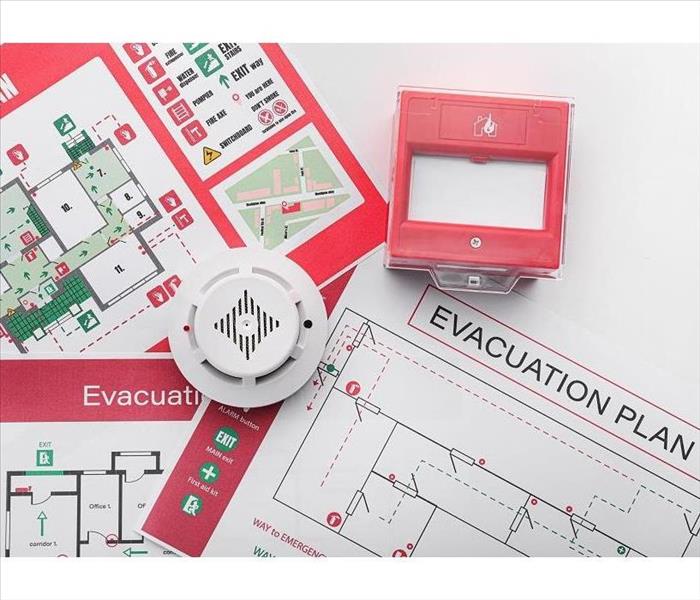 A fire escape plan for a commercial building.
A fire escape plan for a commercial building.
It is estimated that there are more than 100,000 commercial fires every year. While a fire damage and restoration company may be able to restore the property, business owners in Layton, UT, need to ensure the safety of everyone inside. Establishing a fire escape plan is essential for that to happen.
Essential Parts of an Emergency Escape Plan
Every business may be different, but there are key ingredients to an emergency plan regardless of the size or type of business.
1. Identify Potential Hazards
While not all fires are preventable, many of them are. The first step in creating a plan requires determining what hazards your business may face. Inspect every part of the property to determine what may be a fire threat. Things to look for include overloaded electrical outlets, equipment near water, employees using space heaters and storage closets with flammable chemicals. If your business has a kitchen, it is ideal to establish rules to ensure that any equipment is being properly used.
2. Assign Key Roles
When a fire breaks out, it is often a chaotic situation. To help ensure your fire escape plan works, it is important to establish a chain of command and assign key roles to specific individuals. Along with a chief warden, who will take the lead during an event, other assignments should include an assistant warden, route guides and floor monitors. The route guides will work to help people calmly evacuate and keep the path clear while the floor monitors will ensure everyone is safely out of the area.
3. Establish Designated Escape Routes
Successfully evacuating requires knowing the best path out. Every plan should have both a primary and secondary escape route. These routes should also be kept clear of objects that may slow down the escape. A map should be created, especially if your business has multiple floors, that clearly shows the route and fire extinguisher locations. Along with getting out of the building, ensure that everyone knows where to meet up after exiting the building. This location should be a safe distance away from the property.
4. Have a Communication Plan
Communication is always important, especially in an emergency situation. It is important that one of the key roles established in the plan is in charge of calling emergency responders, as well as communicating with customers, employees and other business-related people. This is an important role to not only ensure that everyone on-site has up-to-date information but also to ensure that business operations will get back on track faster after the situation is over.
5. Practice the Plan
Practice makes perfect applies perfectly to being prepared for emergency situations. Just like kids in school, adults also need to regularly go through the fire plan and conduct drills. Doing so helps reaffirm that everyone knows what they should be doing as well as serves as an opportunity to make the plan as efficient as possible.
Every business should have a fire escape plan. Whether the business is small or large, ensuring that everyone knows where to go and what to do may help ensure everyone's safety.
How To Save Your Wet Wood Floor
7/25/2022 (Permalink)
 Water can damage your wood flooring.
Water can damage your wood flooring.
Wood flooring is beautiful and can enhance the look of your building. However, wood floors can easily be damaged by water from a pipe burst, spill or another source. Quick action is required to prevent permanent damage.
How To Save Your Wet Floor
Waxes and sealants provide you with more time to clean up spills and other water damage before it is absorbed into the wood. However, quick action is still required to save your wood floor from permanent damage:
1. Remove Wet Objects
Anything wet that is lying on your floor will continue to leach water into the floor. Additionally, mold and mildew may grow which can infiltrate the seams and pores of your floor. Remove wet rugs, carpets, clothing, toys, furniture and other items as soon as possible. Throw out items that can not be salvaged and move the rest to a location where they can dry without damaging your floor.
2. Remove As Much Water As You Can
Use mops, towels and clean rags to absorb as much liquid as you can. If you are dealing with a pipe burst, make sure the water supply to the pipe is shut off so that additional water isn't leaking onto your flooring. You can remove larger amounts of water with a wet vacuum. Continue to vacuum even after there is no longer visible water on the surface of the floor. This will remove some of the water that is in the plank seams and wood pores. Keep vacuuming until you are no longer seeing any new water in the vacuum canister. If you are dealing with damage from a flood or a large amount of water from a plumbing issue, consider contacting a water restoration service in Layton, UT, to assist you with removing the water from the flooring.
3. Dry the Floor
Once you finish removing as much water as you can with the wet vacuum, finish drying the wood. Position a dehumidifier in the center of the room and run it on its highest setting for a minimum of 24 hours. Position fans around the room and run them at high speed. If the damage is on an upper floor, place fans on the level below and aim them toward the ceiling to help dry the subfloor and underside of the flooring. If it is not raining, you can open some windows to increase air circulation.
4. Check for Mold
Moisture promotes mold growth. Look for signs of mold in the pores of your wood floor. If you find any, clean the floor with baking soda and water or contact a mold restoration service.
5. Test for Remaining Moisture
Use a moisture testing meter to check for moisture remaining in the wood of your floors. It may take several weeks for the floors to completely dry. Keep running your fans and dehumidifier until the meter shows no moisture remaining in the flooring.
Water from a pipe burst, flood or spill can severely damage wood flooring. However, taking quick action to remove water and dry the flooring can reduce the amount of damage that occurs.
How Pretesting Helps To Lower Insurance Claims
5/19/2022 (Permalink)
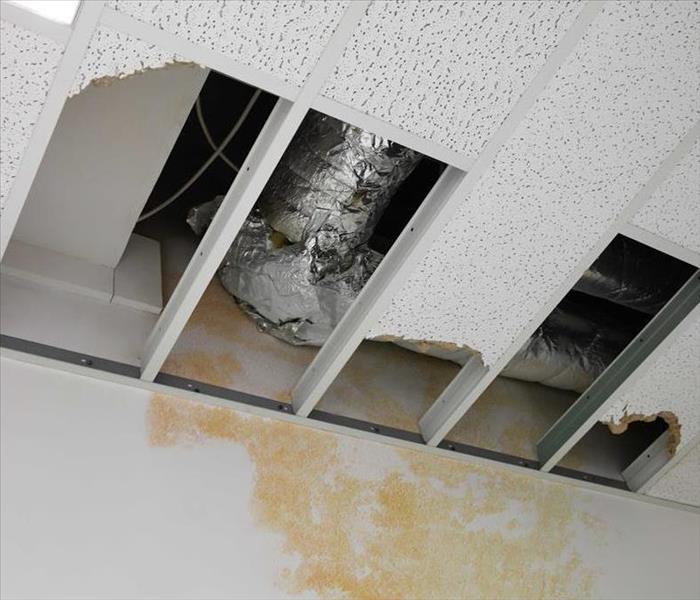 Know more about Insurance Claims by Following Our Tips.
Know more about Insurance Claims by Following Our Tips.
Having a solid property insurance policy is essential for any property or business owner. Managing the claims process well is one factor in keeping premiums affordable. When a building in Layton, UT, is damaged, it makes sense to call certified restoration experts so that the mitigation process can begin as soon as possible. The best teams, however, start with pretesting. A little extra attention at the beginning of cleanup can make a world of difference when it comes to filing accurate insurance claims.
Identify Contamination Level
Any time there is water damage in a commercial building, a preliminary inspection helps technicians determine the extent of the issue. First, they identify the source of the water. Even if the leak is from a clean source, however, it is prudent to test for the contamination level:
- Category 1 - Clean water from pipe or supply line
- Category 2 - Gray water from machine or appliance runoff
- Category 3 - Contaminated water from a storm or the sewer
The initial source may put out clean water, but excess moisture can easily become contaminated before the cleanup crew gets to it. For example, a leak may start with a malfunctioning faucet but pick up dirt and other debris as it seeps through walls and flooring. Knowing this information at the beginning of the process is crucial for creating an accurate claim.
Reveal Additional Issues Through Inspection
Another way that pretesting helps to lower claims is by showing the scope of the problem during the inspection. Any additional issues that are discovered can be repaired before they cause secondary damage. For example, a busted pipe may be the cause of the current emergency, but when technicians discover weaknesses in the pipes around it during their assessment, they can make recommendations for preventative repairs.
The building owner can go ahead and have those issues repaired so that they don't cause water damage later, which saves him or her from having to file another insurance claim.
Inform Future Prevention Strategies
A maintenance problem that leads to water damage is not exactly good news, but it can be informative, particularly when it comes to prevention. Once strategies are implemented and the cause of the water loss is thwarted, the number of claims the client files should be reduced dramatically. Prevention can include actions such as adding insulation to pipes along external walls or replacing worn-out plumbing.
Business owners should talk to their insurance agent to understand the maintenance responsibilities the provider expects clients to uphold under specific policies.
When a building sustains water damage, it is understandable for business owners to want to resolve the issue as soon as possible, but thorough remediation starts with pretesting. A solid assessment helps technicians properly diagnose the problem and create a clear plan of action. It is also vital for compiling an accurate task list for the itemized estimate. Such an investigation can even prevent the problem from happening again in the future. Inspections and other tests at the beginning of the cleanup process reduce insurance claims in the long run.
How To Protect Your Property After Fire Damage
5/11/2022 (Permalink)
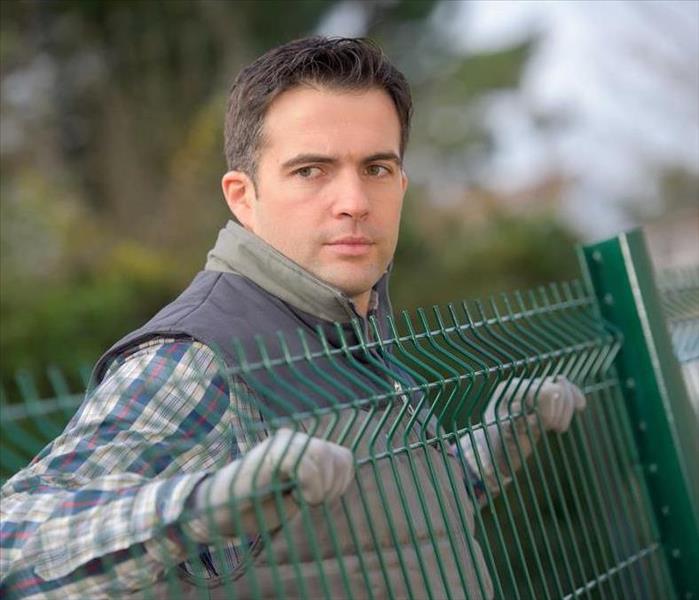 Protect Your Property and Avoid Fire Damage in your Property.
Protect Your Property and Avoid Fire Damage in your Property.
Even after taking many precautions, your commercial property in Kaysville, UT, can experience fire damage. When this happens, most of your attention will naturally be on recovery from damage and ensuring the safety of the people on and around your property. Unfortunately, looting can also be a cause of loss in the aftermath of the fire.
Prevent Looting and Other Losses After Fire Damage
Many businesses simply aren't very secure even before an emergency, and after a fire, those buildings become enticing to looters and other unwanted intruders. There are several reasons that your property is more vulnerable at this point:
- Doors and windows aren't tightly secured.
- Structural damage leads to more openings.
- Many unknown people are walking in and out of the property.
When your business is in upheaval, it's much easier for intruders, including animals, to enter your property.
Board and Tarp Openings
One of the first steps you can take to prevent looting after fire damage is hiring property cleanup and recovery professionals to board up and add tarps to your building. This step prevents water and wind from causing secondary damage.
It also discourages people from climbing through those openings and stealing materials from your property as well as protecting you against any liability you may hold when a third party is injured while on your property.
Remove Valuable Belongings
When the fire department gives you the go-ahead to reenter your property, remove valuable belongings that would attract the attention of intruders. Some fire cleanup and recovery technicians will remove and repair some of those belongings, so work closely with these professionals.
In addition to computers and other machines, you may want to secure inventory, fixtures, and materials such as copper wiring.
Discourage Animal Intruders
Identify areas that are still vulnerable, particularly to animals and pests. Rats, mice, and birds may move into your building through new gaps and cracks in the walls and roof. These pests build nests, chew up building materials, and gnaw through wiring. This damage leads to further damage and opens up opportunities for corrosion and mold growth.
Insects may also find a damaged building more enticing and can cause damage when building hives and as honey seeps through cracks in the walls. All of these pests can disrupt daily routines with unwanted noise.
Implement Obvious Security Measures
Next, make sure you have visible security measures and deterrents. Temporary fencing is a great way to make it harder for would-be intruders to tamper with your property. Visible cameras and security systems warn away anyone tempted to enter your building. The boarding that you had installed previously is an integral part of this prevention.
Arrange for visual inspections and patrols. The presence of someone moving around on your property discourages passersby from stopping to investigate. An official presence on your property keeps curious onlookers, looters, and kids away from your building throughout the fire cleanup process.
When fire damage makes your Kaysville, UT, building vulnerable to intruders, you risk loss through further property damage, theft, and liability. Protect your property and belongings by taking steps to reduce access, discourage trespassing, and increase a security presence.
Understanding Your Company's Fire Sprinkler System
4/13/2022 (Permalink)
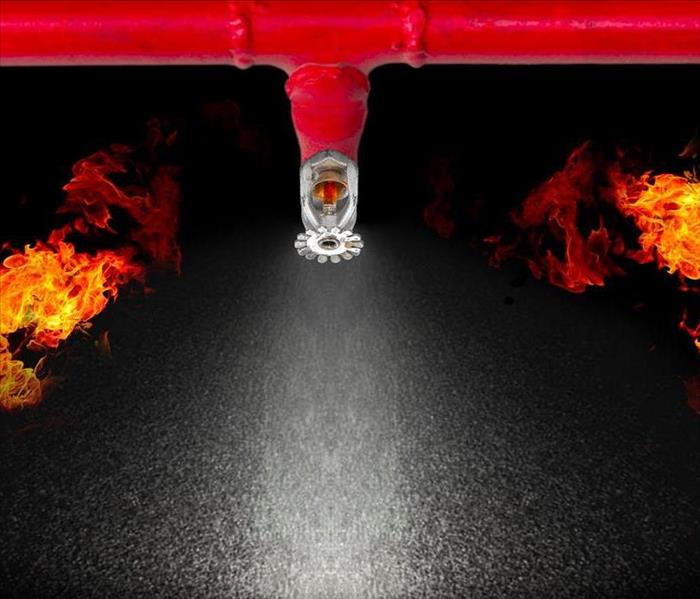 To avoid Fire Damage, it is good to Understand Your Company's Fire Sprinkler System
To avoid Fire Damage, it is good to Understand Your Company's Fire Sprinkler System
If your company has taken the extra step of putting in a fire sprinkler system, it has made a significant investment in fire protection. These units are at the ready night and day and can effectively suppress an incipient fire that could cause many thousands of dollars of damage.
Business fires are all too common, especially if your company in Kaysville, UT, is in a high-risk industry:
- Hot food preparation
- Warehousing of combustible items
- Heating and cooling
- Manufacturing
While sprinklers in your building are a valuable investment, they only are effective for fire suppression if they are in working order. To a large extent, this task falls on the company you contracted with, but that doesn't mean you don't have any responsibilities.
Knowing All About Your Fire Sprinkler System
The more you or someone in your company knows about the sprinkler system, the better off you will be. This allows you to develop a working relationship with your contractor and lets you keep track of regulations and compliance laws. A rudimentary understanding of how the system works is also important.
In general, a business sprinkler system has a series of piping that runs throughout the critical areas of your company. At certain points, sprinkler heads can release water from these pipes. When a fire starts, sensors recognize the heat and the system activates, spraying water onto the fire.
The best part of a good system is that it stops fires before they get big. This can prevent a lot of damage. You will still need a professional water damage restoration company to come to your building, but the cleanup will likely be fairly small. A fire sprinkler cleanup pales in comparison to a restoration job that includes soot and smoke damage.
Understanding the Installation Process
The people who install your system will be professionals who are well versed in the pertinent regulations and codes that apply. They can install the entire system when the building is going up, or they can put in a system in an existing building.
The cost for a good fire suppression system is not cheap, but it can save your company money on insurance. If the system is ever needed, especially at night when no one is around, it will be among the best investments your company has ever made.
Dispelling Myths About Sprinklers
Some companies worry that sprinklers could discharge for no reason or just because the air is too warm. Or that an insignificant heat source could activate the sprinkler heads, but this is rare and is unlikely to cause much damage to an area.
It is also important to note that not all sprinkler heads activate at once, only those nearest to the flame. In many cases, only one sprinkler head is needed to contain a fire.
At the minimum, your company should have a robust fire prevention plan in place to protect your property, your employees and the future of your company. A solid fire sprinkler system is one of the most effective ways to limit the damaging effects of a commercial fire.
How To Prevent Rain Damage to Your Building
3/9/2022 (Permalink)
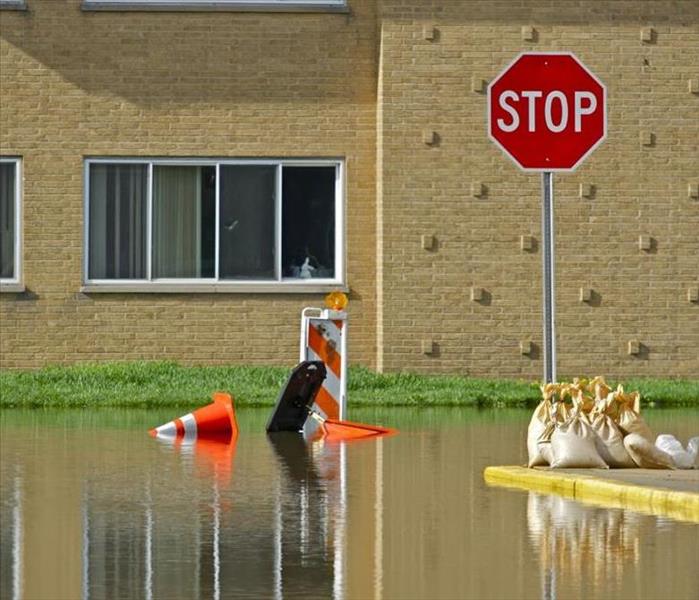 Prevent Rain Damage in Your Commercial Building by following These Tips.
Prevent Rain Damage in Your Commercial Building by following These Tips.
Seasonal downpours can wreak havoc on your commercial property. During a strong storm in Kaysville, UT, there is a heightened risk of rain damage to your building. Fortunately, there are many steps you can take to decrease your chances of flooding and protect the structure from both water damage and secondary issues such as mold growth.
Control Water Flow To Prevent Rain Damage
Flood prevention starts with a tight building envelope. Begin with a thorough inspection of every possible place where excess moisture is likely to enter your structure:
- Does the roof pitch encourage efficient runoff?
- Is your roof intact?
- Are the windows and doors well-sealed when shut?
- Can you identify any weak spots where exterior walls meet the roof?
- Is your foundation stable and free of cracks?
The harder it is for water to get into your building, the less likely you are to find water damage during a storm, particularly on the upper levels. A frequent survey of the building is an important part of a preventative maintenance plan.
Prevent Condensation Buildup
A spring rainstorm can mess with the temperature control inside your building. Condensation happens when warm air comes into contact with a cold surface. The conflicting temperatures pull moisture from the air and cause it to bead up, leading to potential rain damage. Common places where condensation occurs include HVAC systems and behind or beneath appliances. If you catch the problem quickly, you can take measures to even out temperatures so that it doesn't become a bigger issue.
Improve Ventilation Throughout Building
While it's important to keep floodwaters out of your building, you want to make sure that your efforts don't stifle ventilation. Stale air can lead to higher humidity levels, which create a prime environment for black mold growth. Keep your HVAC system running even when people aren't in the building to keep airflow constant throughout the building. It's also a good idea to test your air quality on a regular basis so that you can identify potential issues before they cause a problem.
Protect Basement From Backflow
During a heavy storm, it is not uncommon for municipal sewers to become full with the extra runoff the event produces. This may be bad news for your building, particularly if you don't have valves to stop the sewer from backing up and releasing through drains inside the structure. When this happens, quick action is the key to minimizing the damage that it may cause.
Storm damage restoration experts recommend that you install a sump pump in your basement to start the process of removing excess water as soon as the device is triggered. The less time that standing water spends in your building, the less destructive it is likely to be.
You can't always keep all excess moisture out of your building, especially during a particularly heavy storm. You can, however, minimize the ability of the excess water to enter your building, and you can take measures to control humidity and moisture issues inside the structure. The more precautions you take, the more likely you are to avoid excessive rain damage.
Steps To Take After Water Damage
2/17/2022 (Permalink)
 Follow these tips If your Commercial Building has Water Damage.
Follow these tips If your Commercial Building has Water Damage.
Regular inspection of your commercial building in Layton, UT, is essential for identifying maintenance issues before they get out of hand. Whether you have a busted pipe or a hidden leak, any extra moisture can cause a lot of water damage, especially if you don't catch it early. If you find evidence of a leak, there are a few steps you need to take immediately.
Consider these Steps if you experience Water Damage
Report Water Damage to Insurance Provider
The first thing you need to do any time there is a problem with your commercial property is to contact your coverage provider, and damage caused by broken pipes is no exception. Notifying your insurance agent as soon as you know there's a problem has several benefits:
- Start your claims process
- Prompt a visit from an adjuster
- Guard against any negligence concerns
The sooner your insurance company knows about the problem, the faster its response is likely to be when it comes to getting you the support you need to pay for it. Reporting the issue to your provider can also serve as evidence that you are doing everything you can to get your building back in order.
Document All Damage
Upon arrival, your insurance adjuster will complete a walkthrough of the affected areas and make note of the water damage in your building. The adjuster may have several questions for you to help determine the timeline of the loss and how much your policy covers. Finally, he or she is likely to take pictures and videos of the problem areas and make a list of damages.
It's a good idea to collect your own documentation as well. As the first person to see the damage, you are in the unique position of being able to show exactly how it looked from the beginning. If there is standing water, for example, you can take pictures before and after it was extracted. Additionally, the insurance company may ask you to include a list of items that need to be repaired or replaced along with an estimate of what it will cost to do so. Accurate documentation increases the chances that your claim will be accepted.
Contact Restoration Company
Another thing you need to do shortly after you discover damage to your building due to a leak or pipe break is to call water restoration experts. They typically arrive on-site within hours to start the water cleanup process. They will assess the damage to your building, remove water and damaged materials, clean and dry the affected area, and restore the structure to its former state.
It's a good idea to hire a company that handles both mitigation and restoration. One benefit of this decision is that it tends to improve communication throughout the process. Another perk is that all of the details of the process as well as the charges for each item are included in one statement. This gives you one document with all the remediation charges to submit with your insurance claim.
As with any problem, it's important to document issues with your building and loop in the necessary professionals. When your commercial building has water damage, your quick response is the key to minimizing the time and cost of fixing it.
Water Mitigation Procedures for Pipe Burst and Supply Line Failures
2/3/2022 (Permalink)
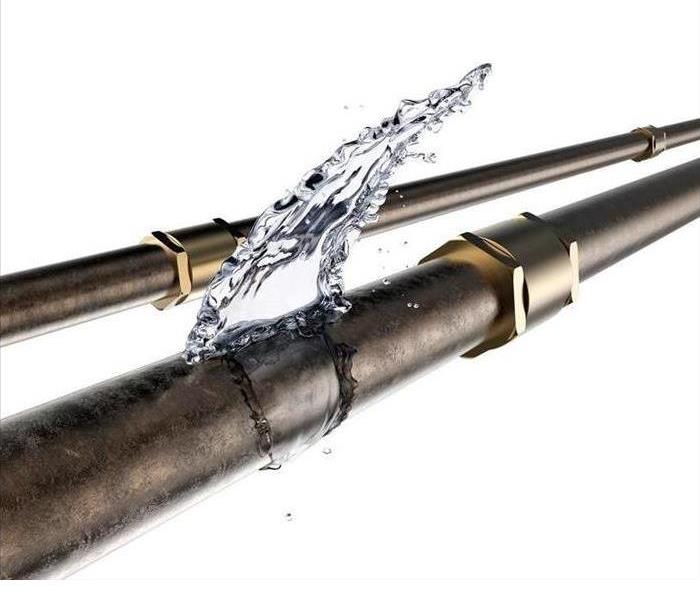 Learn more about Bursting Pipes and avoid Water Damage.
Learn more about Bursting Pipes and avoid Water Damage.
Water damage in commercial facilities is often a concern because of the inventory and cost of business interruption. While a restoration service in Layton, UT, can help with a pipe burst cleanup or supply line leak, the company must understand how long the site will be out of service. The timeline depends on several factors, but the primary consideration is how long each step in the restoration process will take.
- Excavate the water
- Repair the leak
- Dry the interior
- Restore the building
Steps For Water Mitigation
Excavate the Water
A supply line leaking may not take that long to recover from because there is limited and controlled flooding. However, a complete break or burst often floods the premises, requiring a significant amount of pumping and problem-solving.
Repair the Leak
The critical first step of any mitigation process is finding the damage to the supply line, and that search can often come before the pipe burst cleanup. The time it takes to find and repair the leak depends on the extent of the damage. In some instances, the break is obvious, but more often, the leak and water damage stems from several pipes, some of which may be hidden behind walls.
Dry the Interior
With the water shutoff and problems addressed, the restoration service can begin the water cleanup, which involves the drying of the facility. The company will use multiple tools, such as dehumidifiers, fans, and air movers. Drying the interior can take several days, depending on the level of flooding.
Restore the Building
Once the space is dry, the restoration service can move on to repairing the building. When the team finishes the project, all plumbing should be in working order, and it should be challenging to tell the difference when compared to pre-disaster conditions.
A pipe burst cleanup can devastate a business, but problems can resolve quickly when companies prepare for the risks. Ensure that you have an emergency plan and understand the necessary steps for mitigation and restoration should disaster strike.
Category Two Water Damage and Your Business
1/14/2022 (Permalink)
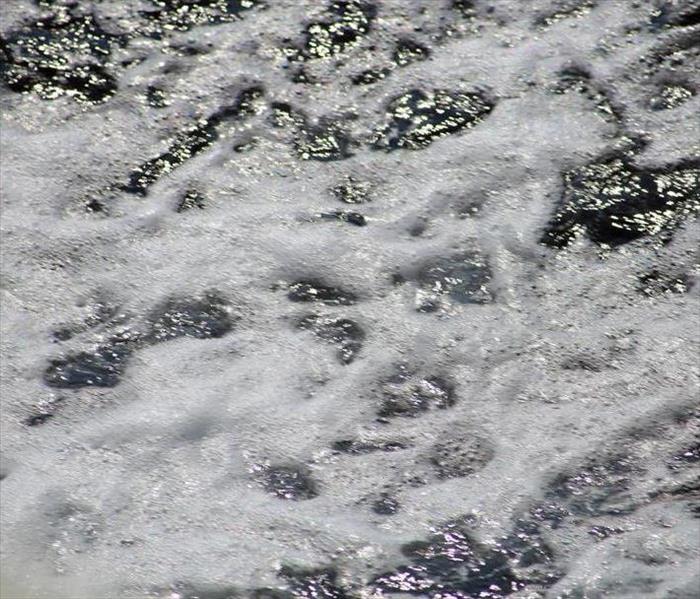 Consider these tips if your business in Kaysville, UT experiences Water Damage,
Consider these tips if your business in Kaysville, UT experiences Water Damage,
Businesses typically experience high volume water usage because of the number of patrons and employees using the facilities daily. The extensive usage can lead to a shortage in the lifespan of pipes throughout the complex. In turn, commercial buildings can experience breaks, and water pipe repair needs more frequently than residential properties.
Important tips to consider if you experience Water Damage
If your business experiences water damage, it can occur at various contamination levels, typically requiring professional intervention from a restoration service in Kaysville, UT to avoid extensive problems, such as:
- Flooding
- Inventory loss
- Business interruption
A water restoration and mitigation service will quickly identify the water category and mitigate further losses. However, the first move is to contact the professional rather than attempt a DIY solution.
Water Pipe Repair and Safety
A broken pipe does not imply a catastrophe. Pipe breaks occur at various levels of severity, including a minor split in a supply line to a sink or a total collapse of a drainage system.
Your response needs to match the urgency of the situation. A minor break from a clean water source is not as urgent as a break within a wastewater line, but both require a level of immediacy.
Unless you are a licensed plumber or disaster response specialist, it is vital to leave category identification to the experts. Attempting to enter a flooded area without first understanding the risks is reckless.
Water Categories and Risks
There are three categories of water loss: clean, gray, and black.
Clean water loss or damage is a flood caused by a break in a clean water source, such as a supply line to a sink.
Gray water or category two water stems from clean water exposed to other substances. For instance, if clean water soaks through the ceiling of an upper floor to flood the lower level, it exposes the lower level to category two damage. Gray water is not safe and can lead to illness.
Black water is the most contaminated version of floodwater. It typically comes from a waste source or an external source. Black water is filled with bacteria and other contaminants. It can be toxic, and it should only be cleaned by professionals.
Category 2 Cleanup
Because category two water can also present health risks, hiring a professional to clean your facility is best. The cleanup process is the same as it is for any water cleanup:
- Remove excess water
- Dry affected areas
- Clean facilities
- Restore to pre-disaster condition
The water restoration process can take anywhere from two to five days or more, depending on the severity of the damage. A minor, clean water flood will typically take significantly less time to remediate than a gray or black water flood.
For more specifics on the timeline, talk to a restoration professional. They can assess your property and provide more insight.
A water pipe repair can be the least of your concerns if portions of your facility flood. While the repair is essential, the damage and the loss category can determine the expense and timeline for recovery.
When facing a flood or pipe break, contact a restoration service. It is best to avoid DIY solutions, primarily when your business depends on a timely recovery.
Prepare Your Business for Flood Safety: Before, During, and After the Flood
12/9/2021 (Permalink)
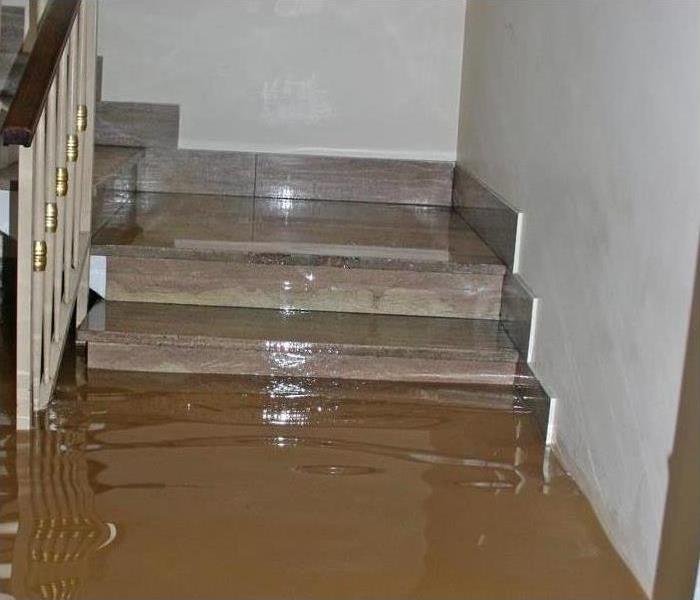 Commercial flood damage in Kaysville, UT
Commercial flood damage in Kaysville, UT
Floods can be caused by many situations, such as overflowing rivers, ocean storms, heavy rain, and quickly melting snow. Broken dams and levees can also lead to rising water. In fact, flooding is the most common form of natural-weather disaster, whether it involves a couple of inches or a flash flood that covers all of the vehicles in your parking lot.
How to Protect Your Business From Floods
There are several things you can do to protect your business from floods and flood damage, before, during, and after the disaster.
1. Take Action Before Floods Hit
One of the most important things you can do before your business is affected by flooding is to save your crucial data. This means setting a regular schedule for backing up your information and maintaining cloud storage. With your business plan, banking information, contracts, and other high-priority documents safely stored on the cloud, you won't have to panic when black water fills your records room.
Other steps to take before the water rises include establishing a business continuity plan, setting up emergency kits and evacuation routes, and establishing an emergency response protocol. You may also want to establish a professional relationship with an emergency mitigation company for a faster response when disasters happen.
2. Maintain Safety During Rising Water
During flooding, follow the directions of Kaysville, UT, authorities, put your emergency plan into action and focus on keeping your personnel safe. Be aware of dangers such as electricity when the water rises above the levels of outlets, the increased risk of falling because of slick surfaces, and contamination when black water enters the building.
3. Recover From Flood Damage
Even as the water begins to recede, stay away from affected areas. The water on your property and in your buildings may carry raw sewage, chemicals, and other dangerous substances. Moving water could make you lose your balance. Contact Kaysville, UT, emergency restoration workers to learn the most appropriate steps to take.
How To Clean Up the Effects of Roof Damage
6/18/2021 (Permalink)
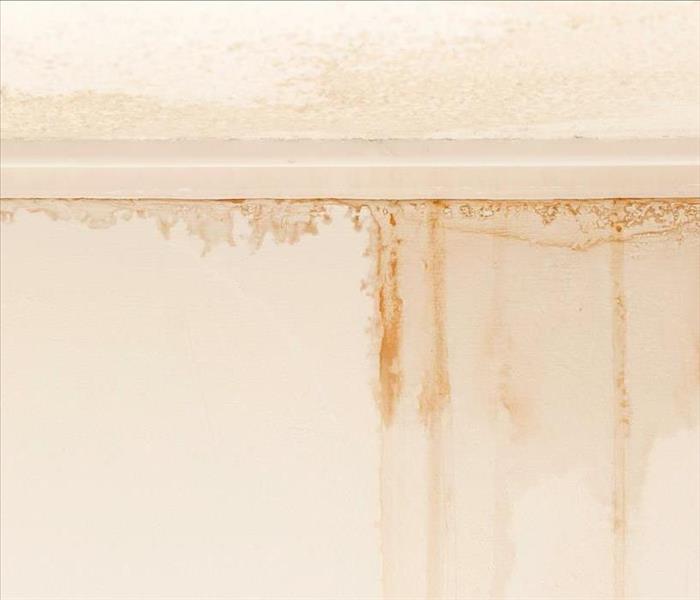 A damaged roof due to a storm can lead to water damage.
A damaged roof due to a storm can lead to water damage.
A big storm in Layton, UT, can do more than just leave your office building without power for a little while. High winds can scatter debris and loosen shingles. Add heavy rain to the mix, and you may have a serious roof leak on your hands. Storm damage restoration specialists can help you find and fix all the problems caused by inclement weather.
2 Ways a Restoration Specialists Can Help With Storm Damage
Roof Repair
Taking care of the damage to the roof is the first priority. This keeps more water and debris from getting into your building and causing more issues. Hail and wind can tear up your roof in several ways:
- Missing shingles
- Torn flashing
- Clogged gutters
- Cracks and holes
Until the roof repair is finished, tarps and board-up services are necessary to protect your building. Once contractors start to repair the damaged roof, cleanup technicians can inspect the interiors for water damage and related problems.
Damage Cleanup
If you have a roof leak, you probably also have some interior damage. The first thing that the mitigation team does is tear out all the materials that cannot be salvaged. This likely includes saturated drywall, insulation, flooring and ceiling tiles. Once all the ruined parts of the structure are removed, the technicians can focus on disinfecting and drying the area. Then, they rebuild walls, install new ceilings and flooring, and make sure the paint matches so that no one can tell where the damage was. Finally, all equipment, furniture and other items must be thoroughly cleaned before they are returned to their rightful place in the building.
After a storm, you need to inspect your office building, especially the roof. Even a small roof leak can cause considerable water damage. Not only do you need roof repair but also a certified team to help you clean up the mess it leaves inside. Fast and thorough mitigation can protect your building from further damage.
Content Cleaning and Restoration
5/25/2021 (Permalink)
 A broken pipe can lead to severe commercial water damage.
A broken pipe can lead to severe commercial water damage.
Floods and other water damage can result in significant loss for a commercial property. A flooded company will need to cope with the potential losses of electrical equipment, paperwork, and inventory. Thankfully, not all hope is lost after a water crisis. As a property manager or business owner, you can call on the support of a restoration company in Layton, UT, to help salvage any potentially damaged content. The process for saving equipment, inventory, or files will depend on the materials, which often fall into three categories.
3 Categories for Content Cleaning and Restoration
1. Paper
Paperwork is among the most vulnerable to water loss because it is degradable. Therefore, following a broken pipe or flood, you want to collect the material quickly. Lay it out in a dry area with direct sunlight. You can place a paper towel underneath to expedite the drying process. Some documents might need a more nuanced approach, in which case, you will want to contact a specialist or a document recovery service.
2. Electronics
More than likely, a flooded company will have damaged or affected electronics, like computers or machinery. Whatever you do, do not turn anything on. It is best in situations like these to contact a service technician. The equipment will need to be thoroughly dried before being powered on, and even then, certain precautions might need to be made.
3. Fabric
It is not uncommon for companies to have fabrics, like rugs, curtains, etc. While some of these materials might be washable, others might require specialized or commercial equipment or dry cleaning. Depending on the type of flooding experienced by your property, you might want to contact a restoration specialist for advice on cleaning.
A flooded company is likely to experience a variety of water damage. Instead of writing off everything to loss, consider the material and its value. There are many professional cleaners specializing in water damage restoration.
Your OSHA Compliant First Aid Kit
4/12/2021 (Permalink)
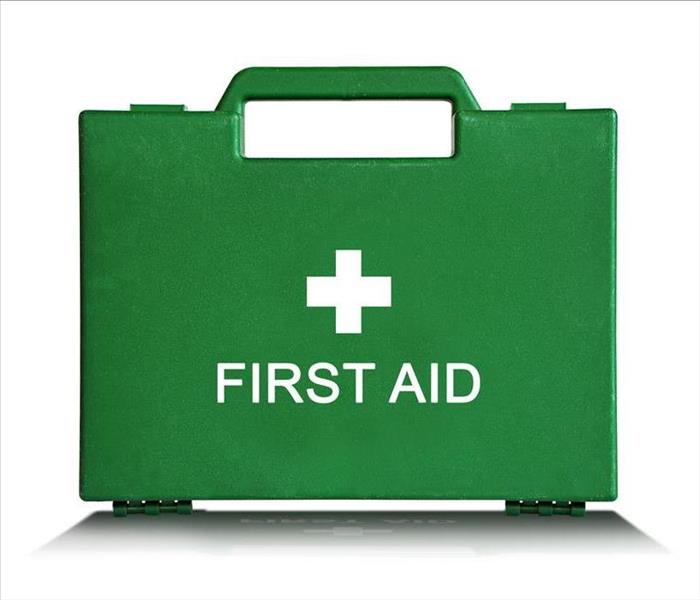 Having a first aid kit is crucial.
Having a first aid kit is crucial.
As a facility owner or manager, you have a lot of responsibilities, and one of the most important is protecting the safety of the people inside your Layton, UT, buildings. To that end, a well-stocked first aid kit is crucial, and it's an important part of OSHA compliance.
Focus on the Goals of First Aid
Workplace first aid must provide for the temporary care of an injured person until medical professionals can provide the necessary care. The primary goals of providing first aid are:
- To preserve life
- To prevent further injury
- To promote recovery
OSHA-Required Basics
Start with the basic items required in an emergency kit and adjust the numbers of items by the number of people in your buildings:
- 4x4-inch gauze pads
- 8x10-inch gauze pads (at least two)
- 1 box of adhesive bandages
- 2-inch-wide gauze roller bandage
- Triangular bandages (at least two)
- Two elastic wraps
- Scissors
- Adhesive tape
More Items Required by OSHA
After including the basic items you need for treating common injuries, add supplies to improve the quality of first air care:
- Latex gloves
- Sealed moistened towelettes or other sterile wound cleaning agent
- Tweezers
- Burn spray or cream
- Burn dressing items
- Eyewash stations and refill solution
- Splint
- Blanket (at least one)
- Resuscitation equipment
Items Not Required by OSHA
You could also include items that increase the comfort of individuals in the workplace:
- Allergy relief
- Cold relief
- Headache relief
- Antacids
Education for Providing First Aid
In addition to filling your first aid kit with these necessary items, you should also be prepared for the most common workplace medical emergencies:
- Heart attacks
- Respiratory distress, such as asthma attacks, allergic reactions, and choking
- Seizures
- Shock
- Stroke
First aid and emergency response training sessions should be scheduled regularly, so your employees are prepared to act appropriately when emergencies take place.
Are You Prepared?
The care you put into stocking and maintaining each first aid kit in your facility is critical, not only for protecting the safety of the people but also for remaining compliant with OSHA guidelines. What steps have you taken to prepare for emergencies and keep your facilities safe?
Tips for Mitigation and Restoration After a Fire
3/15/2021 (Permalink)
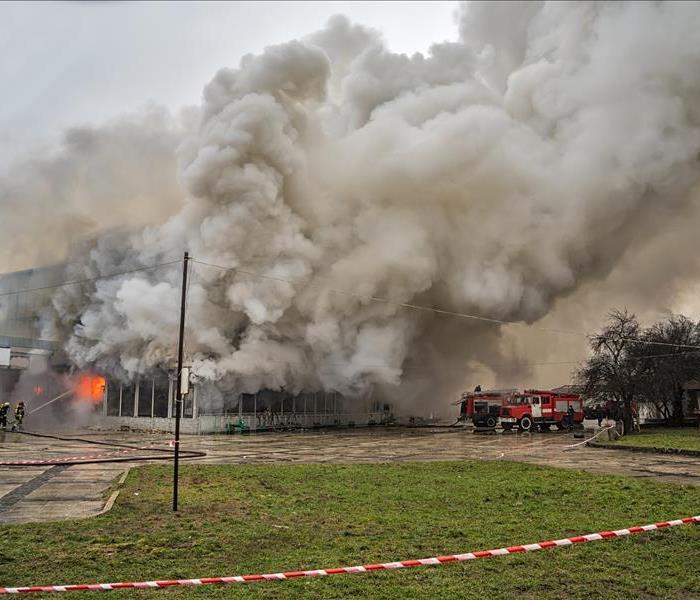 You will receive an estimate after an assessment of the damaged caused by the fire.
You will receive an estimate after an assessment of the damaged caused by the fire.
A fire in your commercial property in Layton, UT, can leave behind a lot of damage. Not only do you have to contend with the soot and charred structure, you also may experience significant water damage from the large amount needed to put out the fire. The fire damage repair process may seem daunting at first, but these tips can help you navigate the plan from start to finish in an efficient manner.
2 Tips for Mitigation and Restoration After a Fire
1. Streamline the Process
Your first call should be to a reputable fire restoration company. Many teams specialize in either fire mitigation or restoration, but the process goes more smoothly if you find one team with experts in both of these main stages. The unified team is your one-stop shop for all the steps of remediation:
- Assessment
- Board-up service
- Water extraction
- Material removal
- Drying
- Smoke and soot cleaning
- Disinfection
- Restoration
Working with one company to complete the whole process has a couple of key advantages. The estimate you receive after assessment covers everything you will need to list on your insurance claim. You also don't have to worry about a lack of communication between the team repairing the fire damage and the one rebuilding your structure when they both work for the same company.
2. Inform Your Insurance Provider
Your insurance company should be looped into the repair process from the start. Call your agent as soon as you know that the mitigation technicians are on their way. The sooner you call, the sooner the insurance adjuster will arrive at your building. Be prepared with the mitigation team's assessment when you accompany the adjuster on the walk-through. After he or she processes the assessment, your insurance claim can be processed more efficiently.
The fire damage repair process can be long and arduous, particularly if the fire covered a large area of your property. By keeping your insurance company informed and hiring one team to handle both mitigation and restoration, you can ease some of your burden.
Why You Need Business Interruption Insurance
2/11/2021 (Permalink)
 Flooding can lead to severe water damage.
Flooding can lead to severe water damage.
There are quite a few things that could disrupt your Layton, UT, business operations and protecting against those interruptions can be one of your top priorities. In spite of your precautions, however, it's also important to purchase business interruption insurance to cover you against losses, such as large water damage that might occur following flooding.
What To Expect From Business Interruption Insurance
Just as there are multiple insurance providers, there are many different policies and degrees of coverage, but there are some protections that are consistent:
- If flooding from a broken pipe closes your doors, that lost income, or the money you would have made if you'd stayed open, is generally covered.
- Without revenue, it can be hard to cover basic expenses, such as your mortgage or rent and payroll. Your insurance coverage may ensure that you can pay your business-related bills and your employees can continue to pay their bills as well.
- Sometimes, property damage is severe enough that you need to move your business elsewhere while cleanup and remediation professionals repair your building. Your insurance policy may cover the temporary relocation
In addition to making sure you have appropriate insurance coverage, you also need to work to keep recovery losses and costs low.
How To Prevent Further Damage
Taking quick action is one of the most important things you can do to lower your business interruption insurance losses. If it's possible to stop water from flowing through your property, such as by shutting off the water main, do this as quickly as possible. Reach out to your insurance provider and water cleanup and damage professionals to learn more actions you can take to reduce damage and get your company back to business as quickly as possible.
The protection you enjoy through insurance coverage is just one way to help your business survive disasters such as flooding. What are some other steps your business has taken to weather catastrophes?
What Goes Into Estimating the Cost of Commercial Fire Restoration?
1/14/2021 (Permalink)
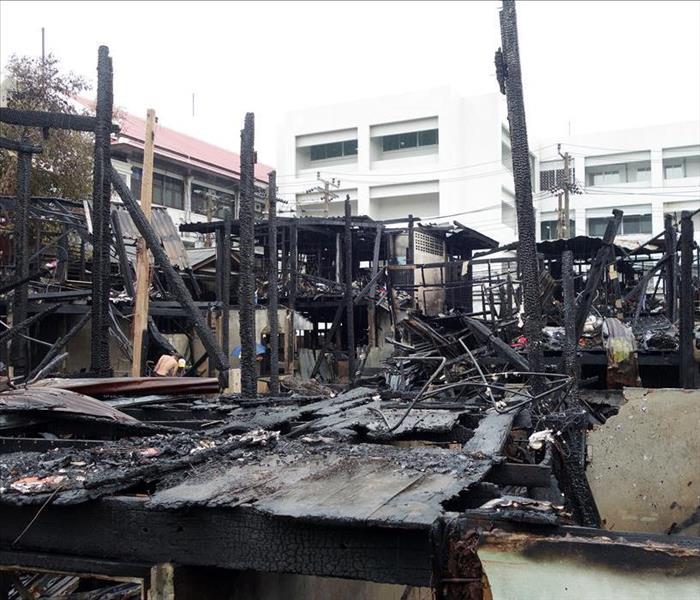 Commercial fire damage.
Commercial fire damage.
Watching your Layton, UT, commercial building go up in flames can send your mind into a tailspin. What happens when the flames are finally out? You’ll most likely need to hire fire damage restoration professionals to make sure the job is done as quickly and thoroughly as possible. After all, the sooner restoration is completed, the sooner business can return to normal.
5 Elements Considered To Calculate the Cost of Fire Restoration
There are a few elements that restoration professionals take into consideration when calculating the cost of a fire estimate:
1. Debris Removal
One of the first parts of the commercial fire restoration process is removing debris from the affected area. The debris can be the main cause of the smoke smell. All unsalvageable materials will be inventoried and then disposed of. After the inventory is complete, it’ll be given to your insurance adjuster so they can determine replacement costs.
2. Board Up
Board up services are necessary to begin immediately to prevent secondary damage, vandalism and theft. If the fire department is called, you’ll probably have water damage, in addition to the burned materials, smoke and soot. Fire damage restoration professionals will remove water from the building before boarding up the doors, windows and damaged walls.
3. Roof Replacement
If the roof has been damaged in the fire, emergency roof tarping will be necessary to protect the building from the elements until a permanent roof can be installed.
4. Damage Restoration and Reconstruction
Property damaged by fire and water will need to be cleaned, deodorized and possibly rebuilt.
5. Content Cleaning and Restoration
All salvageable items will be packed up to be cleaned at a cleaning facility. They’ll be cleaned, sanitized, deodorized and then stored until you’re ready to move them back into your building.
If your business goes up in flames, call fire damage professionals to get a fire estimate as quickly as possible. They can return your building to its pre-fire condition so you can continue with business as usual.






 24/7 Emergency Service
24/7 Emergency Service















